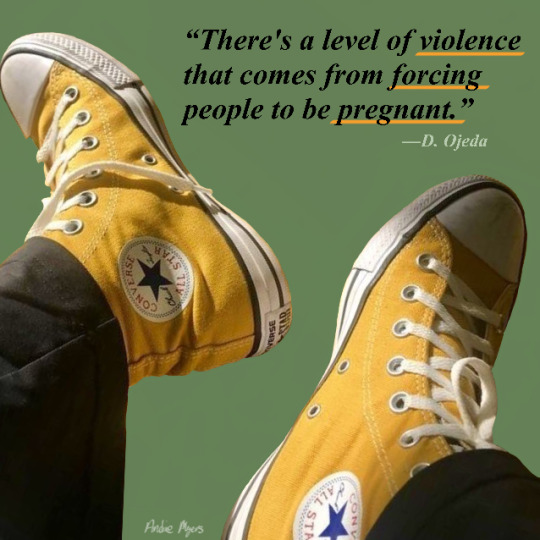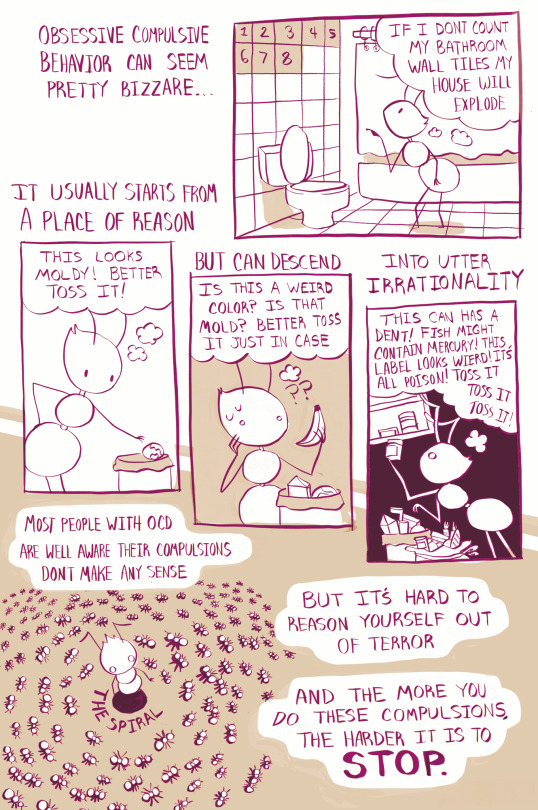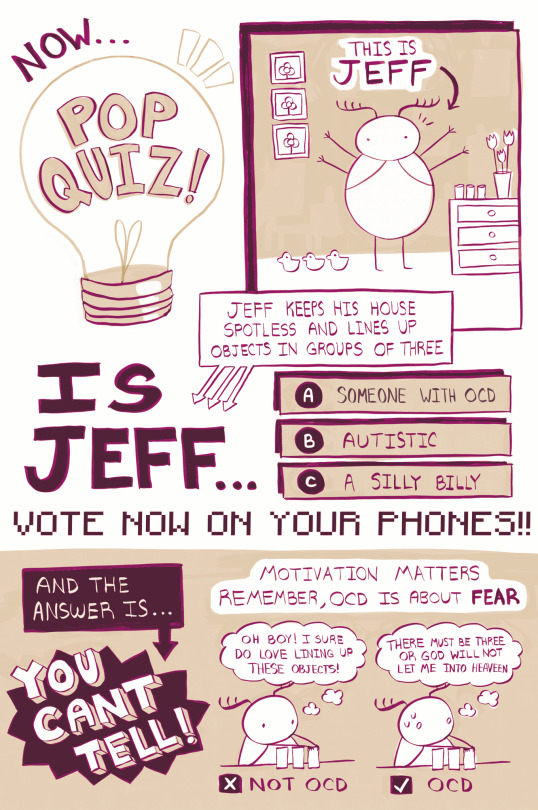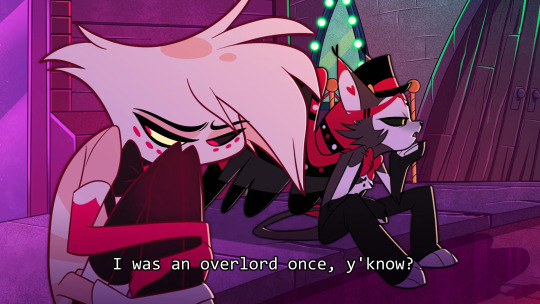#be informed
Text
"The most violent element in society is ignorance."
Emma Goldman.
#thought of the day#thought of today#emma goldman#violence#violent#elements#elements of society#society#ignorance#fight ignorance#awareness#blinkers#information#knowledge#overwiew#perception#perspective#understanding#be informed#do your own research#get wise#think ouside the box#think about it
2K notes
·
View notes
Text
A quick, basic guide towards Hormone Replacement Therapy (HRT) and its changes for transgender women and other identities
Note: This guide is primarily for transgender women/girls who are looking for gender affirming therapy and resources. However, if any transgender men, non-binary, and other gender identities are reading this, please share this post as you may end up helping someone who is considering transitioning into a woman (or girl). Note that this guide may be uncomfortable to some as I will discuss about topics like gender dysphoria or use a few words that may feel triggering, but never in a transphobic manner. I am trans myself and considering gender affirming therapy. However, my knowledge about this topic is still limited, so please bare with any mistakes that I may end up writing throughout this guide. You are more than welcome to write additional information provided it helps with this guide. Links to sources will be provided at the end of the guide. Use them for more detailed and more accurate information.
Do not use this HRT guide or resources to fulfill some “sissy task” or fetish, nor to harm or discredit trans people.
So, you have tried on the clothing, practiced voice training, applied makeup, etc. You have tried everything you can to “feminize” yourself. But no matter how you look on the outside and feel on the inside, you still see someone different looking at you in the mirror and feel distress to the point where you lose sleep. As much as you hate admitting it, you probably have gender dysphoria. If you’re at this stage, it’s time you start finding gender affirming therapy. The problem is, where do you start?
Diagnosing Gender Dysphoria and recognizing its signs
As I have stated in one of the guides I reblogged in the past, it is not necessary to have gender dysphoria to be transgender. However, many transgender people deal with this distress and it can detrimental to their overall health. For instance, if you’re dressed as a girl and feel like a girl, but you see someone in “drag” looking back or focus on signs of “masculinity”, you will definitely feel uncomfortable and have feelings of “impostor syndrome”.
Some signs of gender dysphoria include, but not limited to, hiding any facial and body hair, dislike towards your “assigned parts”, dysphoric when presenting as a male (or other assigned gender different from preferred identity), etc. If you have more than two of these signs and recognize them, you most likely have gender dysphoria and should start looking for help ASAP. Untreated gender dysphoria can escalate towards more detrimental consequences, such as neglect, isolation, depression, anxiety, and even $ui(ide. If you’re suffering from the latter symptom and are not under any form of care, please stop reading this article and call your nearest lifeline center now!
That being said, if you’re experiencing some signs of gender dysphoria even after socially transitioning and desire to feminize your body, the best solution will be taking hormone replacement therapy.
What is Hormone Replacement Therapy (aka HRT)?
Hormone Replacement Therapy, short for HRT (this, is a type of medical solution given to patients who lack sufficient estrogen or testosterone levels due to a hormonal imbalance caused by menopause or due to surgeries such as a hysterectomy. [1] HRT is also provided to transgender individuals as a way to help their physical body adapt to their gender identity. Known as feminizing hormone therapy, the transitioning person will develop secondary sex characteristics typical of cisgender females with the help of various types of medication. [8] Gender specialists typically (but not always) use gender dysphoria as a main reason to provide the patient with gender affirming therapy.
Why do transgender people take HRT?
The point of HRT is that it helps transgender people develop physical traits that are more in line with their gender identity when the right hormones take place in the body. In the case of transgender females, taking HRT will feminize their physical characteristics into that of of their cisgender female relatives. Not only does transitioning decrease the trigger of gender dysphoria, but it also boosts the mental health of trans people as they become more comfortable with their body aligning into their gender identity. In fact, a study done by a team of researchers based on Stanford University School of Medicine found that the earlier trans people commence their transition, the less likely they are to develop characteristics of their assigned birth gender since their puberty cycles become more active during adolescence. Those who commence transition into adulthood are more likely to fall into bad habits, mental issues, and social isolation. The researchers concluded after finishing of survey of over 20,000 participants that the best treatment towards gender dysphoria is to take HRT as some of the participants felt their livelihood vastly improve once they received hormone therapy. To summarize, HRT is the only effective solution for trans people to finally feel comfortable with their bodies once they develop their gender identity’s characteristics.
The different types of HRT medication
Once you’re deemed eligible to receive gender-affirming therapy, you will definitely want to celebrate your new milestone. Now it’s time to identify the different forms of medication you may be provided for your transition.
Pills: This one is the most common type that is prescribed for transgender people due to its affordable cost and ease to make. However, taking oral medication requires you to take daily as the feminizing effects are slower and less evenly-distributed.
Injections: This one is the most effective form since the hormone medication goes directly to the bloodstream and rarely comes with the side effects of hormone pills. However, it is more expensive to produce and purchase, as well as being the most difficult to ingest as it involves piercing your skin with a needle.
Patches: By far the most convenient and very effective method of hormone medication as it fluctuates less in hormone distribution and evens it out throughout the body. You are only required to change patches every 3 to 4 days. Unfortunately, HRT patches aren’t convenient if you have experienced irritation with patches in the past. Consult your physician if HRT patches are right for you.
Here are the types of feminizing hormones you will be provided by your physician and/or medical provider. Each one is crucial to your transition:
Estradiol: Used among cisgender women for causes such menopause and hysterectomy, it is also used among transgender women/girls to promote physical changes on their appearance. This results in their bodies to develop a feminine appearance in line with cisgender women. Depending on their hormone levels, trans women usually take 2mg of Estradiol to take effect of their feminization.
Anti-androgen: This medication is a testosterone blocker and is very helpful to one’s transition if their hormone levels indicate a high level of testosterone. Although it doesn’t completely deplete all of your testosterone, anti-androgens help neutralize your levels to an acceptable rate. Estradiol cannot be effective without balancing your hormone levels. Spironolactone is the most common form of anti-androgen.
Progesterone: This medication is used in later stages of transition. Once your therapist and/or physician see your estrogen levels reach a certain level, progesterone is added as an estrogen booster. This will promote other feminizing changes, such as increasing breast volume, tissue softening, and allegedly, mental changes. This medication, however, is controversial since modern endocrinologists have found the alleged effects of progesterone being almost ineffective. In part, this is due to advancement of medicine and better access to effective solutions. Despite this, several physicians still prescribe progesterone to transgender women/girls as an option.
DHT blockers: For those who produce more testosterone to the point where it converts into a stronger androgen called dihydrotestosterone (DHT), these medications are necessary. There are two types of DHT blockers used: Finasteride and Dutasteride. Both medications are vital for your transition as they block excess androgen, reduce scalp hair loss, and may thin out facial and body hair. Check with your insurance provider as this medication may not be covered by them.
Cause and effect of HRT
This is where many people want to know the effects of feminizing therapy among trans women and trans girls. Keep in mind that a transition is that: a timeline of several changes that occur within a period of time. Most trans women/girls take about a year to notice any change in their appearance, but it wouldn’t be until 2 to 3 years until they notice a drastic change on their timeline.
The following changes are what trans women and trans girls physically experience during transition:
Skin: Your skin would start to soften a bit within 3 to 6 months, but its maximum effect varies by individual. Your skin will glow and oil will reduce while color tone may even change to that of a cisgender girl.
Legs and feet: Muscles will start to atrophy while body fat will be more retained. Your legs will start to slender while your foot size may shrink due to the thinning of the cartilage. This process takes around 3 to 6 months to take effect.
Hair: Scalp hair will start becoming voluminous while body hair will start to thin out and fall off. Process takes 6 to 12 months. Facial hair may thin, but will still retain even after months on HRT. Electrolysis will be required if you desire to eliminate any remaining facial and body hair.
Arms and hands: Upper arms start atrophying about 3 to 6 months and hands and arms thin out to a more feminine shape. Nails become more brittle while arm hair may even fall off.
Breasts: Areolas and nipple area start expanding while bust starts to enlarge. Process usually takes at least a year to see any effect and maximum growth can take up to 5 years.
Genital area: Penile length and testicles shrink and atrophy within 6 months and infertility may occur even sooner.
Body fat: Estrogen will increase the amount of body fat you will store and will be noticeable in the thighs, back area, and waist.
Height: This factor may vary on the individual. Based on a few testimonies, trans women usually lose an inch or two (~5cm) from their pre-transitioning height. This is due to the thinning of the feet’s sole and possibly the arching of the back. This process takes up to even 2 years before it becomes noticeable.
Body odor: Your body odor starts to change after a few months under HRT. Your body odor starts smelling sweeter and more metallic, similar to a cisgender woman.
Here are areas where transition may not change your physical appearance and traits:
Voice: Despite popular belief, HRT does not alter the voice at all. While you may experience a slight change in pitch, hormones do not feminize the voice of trans women in the same manner hormones masculinize the voice of trans men. The best solution is to take voice feminizing therapy through exercises. Voice feminizing surgery is also a consideration, but has its own risks.
Bone structure: Unless HRT is taken at a younger age, preferably during puberty, there is no way to change your skeletal system without costly and risky surgeries. Hip surgeries exist to expand the narrow hip area while HRT may promote a shrinking height as pointed earlier. Unfortunately, there is no effective surgery to reduce broad shoulder length.
Remaining body hair: While HRT may reduce the amount of body hair, it does not eliminate facial hair and some body hair may remain after thinning. Electrolysis is required if you desire to permanently eliminate any type of body hair and is costly and time-consuming.
Other changes where HRT may provoke a change is also present in the way we think. Here are some of the mental changes we may experience under HRT:
Emotions: You become more sensitive to feelings and are more prone to cry under certain circumstances. For instance, you may take a small compliment either to heart or feel offended while a dramatic scene in a movie may feel very heartbreaking.
Sleep: It becomes much easier for you to fall asleep while waking up becomes more energetic. This is due to a boost of melatonin present in estrogen. Sleep depravation is surprisingly common among trans girls and trans women prior to transition.
Mood swings: There will be occasions where you may experience nausea and even feelings similar to hot flashes.
Smell: You become more sensible to smell and some odors become either very pleasant or very intolerant.
Sexuality: This one is more controversial. There have been cases where HRT affects one’s sexuality, not just by sexual orientation/attraction, but by function. For instance, you may find your interests shift into that of a heterosexual cisgender woman while your expressions become more receptive. You may not even find any changes at all under HRT. Many argue that it’s not HRT that affects your sexuality, but rather by accepting your inner, true feelings and detecting gender envy.
Social changes during transition (non-HRT related, but very important)
This process is a very challenging stage for transgender people of all identities and is one that prevents many from ever coming out. As someone who is still in this stage, I sympathize with many of you. As unfortunate as it sounds, here are some of the challenges you may end up facing as a trans woman or trans girl:
Acceptance: This is perhaps, the most difficult stage of one’s coming out. You’re not just coming out of the closet to your family members, but to friends, neighbors, co-workers, colleagues, etc. Do not be surprised if anybody from this list does not accept you. We’re currently living in a time where transphobia is being heavily promoted among social circles who attempt to persuade the neutral or uninformed into believing false stereotypes of trans people. The best you can do should you face an unaccepting member is to cut them off until they are ready to accept you.
Legal document changes: This varies depending on the country or region you live. Although name changes are usually allowed, gender or sex markers are much more difficult to change. You can live in a place like Washington State where changing your marker from M to F can be a breeze while states like Oklahoma bar you from changing your marker at all. [3] Some countries like the UK can take years to change your marker while some countries of Asia do not allow any sex marker change unless you submit documents verifying a sex change (i.e. SRS). [4]
Appearance and adaptation: Adapting yourself as a trans woman in today’s world can have variable results. While some areas such as San Francisco are accepting of anyone LGBTQ+, transphobia still exists in those areas. Whether it’s the bathroom or even outside your home, you always want to make sure you are safe from any transphobic attack. One effective way to prevent that is by “passing”, which is the process of presenting yourself as your internal gender as close as possible. Many trans women make the effort to feminize their appearance through clothing, movements, voice training, makeup, and even interests. Not only does it help trans women appear more feminine outside, but it also gives them a sense of gender euphoria, a feeling of happiness and peace where they see and feel like themselves. If you know anyone supportive of your transition, especially a woman, don’t be afraid to ask for any tips on how to present yourself, how to apply the right blush, and other things that may benefit with your social change.
Surgeries to consider
After a certain amount of time, there is a chance you want to improve the look of your body to a certain degree. As powerful as HRT can be, it won’t remove the thing down there nor would it blow your chest to a D-cup unless your female family members are bustier than that. Whether its to help your gender and/or body dysphoria, whatever options you choose should make you feel great. It’s recommended you have at least 24 months under HRT before commencing these surgeries. Here are the options for feminizing surgery:
Breast augmentation: Let’s face it: we’re never going to get a nice pair of boobs unless our genes defy it or if our mom or female cousins also have big breasts. Many cisgender women also have that trigger of not having a desirable size on their chest. Breast augmentation is an option for those who want to increase their size without resorting to placebos or who are tired of wearing breast forms all the time.
Hip and butt enlargement: Most trans women have an inverted triangle body shape. Because of that, their hip area is not as wide as they desire to be. In some cases, you may not even have a large bum and want to grow bigger. Hip enlargement is available for those who desire a curvier look and the results are very pleasant. However, you can only stretch the hip area to a limit. As for the bum, there are surgeries that help enlarge and feminize the appearance. The most popular is the Brazilian Butt Lift (BBL). If you’re going that route, I highly recommend looking for a professional surgeon as many BBLs tend to look botched after a certain period.
Lip Filler: This surgery is made to enhance your lips to a more feminine appearance. Although HRT may alter your lip shape, it won’t make you look like Kylie Jenner either. This is done through a form of injections and will help your appearance look more feminine. This is recommended for those who only want to feminize their lips and are not interested in the following procedure.
Facial Feminization Surgery (FFS): This is one of the most common surgeries done when undergoing transition. It not only involves lip enhancement, but also involves reshaping the jawline, removing most of the brow ridge, slight enlargement of the eye area, reducing Adam’s apple, and nose reduction. This surgery can be very painful and requires extensive care for about two weeks before showing signs of healing. The benefits will outweigh the cons, however, if your aim is to feminize your appearance.
Sexual Reassignment Surgery (SRS) or Gender Reassignment Surgery (GRS): This is by far, the most notable surgery when it comes to feminizing transition. SRS/GRS is a process that involves reconstructing the trans woman’s penile area into a functioning neovagina. SRS/GRS is a life-changing surgery for trans women and in many cases can alleviate genital dysphoria. It can also improve sex life and makes it easier for trans girls to fit into garments and clothes without the need of gaffs and tucks. However, it is not without its drawbacks. Not only is SRS/GRS a difficult surgery to perform, but it’s also a very costly surgery to pay for and recover from. The amount of time it takes for a trans woman’s new organ to fully heal can take up to a year and involves constant dilation therapies that are painful and time-consuming. If not done right, it can even be life threatening. Although many trans women are comfortable living with a male organ, some states and countries do not allow you to change your gender/sex marker without performing this surgery.
Electrolysis (aka. Hair removal): Unlike the previous surgeries, electrolysis does not require you to be under HRT. This is a type of surgery that you can get even before starting transition. Electrolysis is highly recommended if you are planning to eliminate any excessive or thick body hair or if you’re planning to remove facial hair.
Where to find HRT
There are many ways someone can find HRT to commence their transition. However, many resources are currently being threatened by politicians, zealots, and transphobes around the world. It is very important you find the proper help as some spots that promise “HRT” are either placebos or medication that may even harm you! For those living in the US, here are some of the resources I found for those looking for HRT:
Planned Parenthood: This is the most accessible spot to receive gender affirming therapy and may even be free if your healthcare provider is compatible. Almost anyone is eligible and very safe compared to other resources. There are a few cons, however. Not every state has these centers and some are either too far away or may not even provide HRT at all. Sometimes, those that do provide HRT may not have enough medication to provide and are placed on a waiting list. The best solution I can give is to either contact your closest Planned Parenthood for available HRT medication or look up at this link below to see where you can receive the nearest help: https://www.plannedparenthood.org/get-care/our-services/transgender-hormone-therapy.
Online providers: For those that live outside of public health centers, online providers for HRT is another solution. The most popular sources are Plume and Folx. Each plan provides you a checkup of lab tests, gender evaluation, and access to clinical care. Some have their advantages and cons that make them different. While Plume offers letters of references to doctors and physicians, Folx offers quarterly lab checkups that are crucial to your feminizing transition. The big drawback is that both are not covered by healthcare providers and require you to pay a monthly free of 100 US dollars. They are also not available at every state.
DIY: Although I don’t recommend DIY HRT, this is a route many trans girls and trans women often take due to a lack of resources around their area, as well as the attack on HRT therapy on states such as Florida. It is very important you connect with a close circle knowledgeable in obtaining safe HRT alternatives. There are many blogs here on Tumblr that sell you hormones, but they are questionable due to their varying levels of estrogen that may either be incompatible with your body or may even affect you. If someone approaches you with a message selling you HRT, whether it’s here or on any social site, avoid them at all costs, especially those whose blog’s main target are “sissies, traps, femboys, transvestites, etc.” You may end up buying ashwagandha in high doses, which is not only a testosterone booster, but can even cause irreversible harm if taken for too long.
Resources and support
As much as I would love to be a help, not everyone has the same outcome when it comes to transition. Some of us have circumstances that prevent us from transitioning, such as lack of medical resources, unsupportive peers such as family, persecution and/or lack of protection, economic problems, health issues, questioning, etc. This is where a few solutions can be provided to you.
In the US (and Canada to some extent), Trans Lifeline is a beneficial resource for those who are in need of support, especially in these harsh times. Trans Lifeline is a non-profit run by trans people and aims as a safer alternative to other resources who are more likely to invalidate or even oust gender identities to authorities. If you would like to know more about Trans Lifeline, click on this link here. If you or someone else you know is trans are in deep need, call/save this number: US Hotline (877) 565-8860. Canada Hotline (877) 330-6366.
For those outside the US, if you live in a situation where your life may be in danger for being trans or any identity under the trans umbrella, check out Rainbow Railroad as they are a non-profit whose main objective is to provide safe sheltering for anyone who identifies as LGBTQ+. Although they are based in the US and Canada, they have presence in various parts of the world and can help you relocate to a safer spot, as well as provide resources to put you on track. Click on this link if you would like to learn about Rainbow Railroad or share it to someone in need
Conclusion
I hope this guide gave you an idea of what MTF hormone therapy is and what to expect of its effects. HRT is a very helpful method for transitioning people when done effectively through medical help and emotional support. Even if you’re not looking to transition under HRT or may not even be trans yourself, it’s very important we have at least a clear knowledge of what trans people are going through and what we can do to help without subjecting them to prejudice. Please give a like and/or reblog as you may never know if one basic guide like this can be a great help for someone in need. If you’re looking to research more about transgender hormone therapy and resources, I left a few links on the sources below as they are much more insightful than what I provided. If you have any questions, find blogs and sites specialized in transgender help such as Trans Lifeline or even blogs such as Reddit’s r/asktransgender. Thank you!
Sources:
https://www.nhsinform.scot/tests-and-treatments/medicines-and-medical-aids/types-of-medicine/hormone-replacement-therapy-hrt
https://www.plannedparenthood.org/planned-parenthood-great-northwest-hawaii-alaska-indiana-kentuck/patients/health-care-services/hrt-hormone-therapy-for-trans-and-non-binary-patients?gclid=EAIaIQobChMI5eSPucLUgAMV_izUAR1uYAEyEAAYAiAAEgIuoPD_BwE
https://www.lgbtmap.org/equality-maps
https://med.stanford.edu/news/all-news/2022/01/mental-health-hormone-treatment-transgender-people.html
https://ourworldindata.org/grapher/right-to-change-legal-gender-equaldex
https://www.hrc.org/resources/attacks-on-gender-affirming-care-by-state-map
https://transcare.ucsf.edu/article/information-estrogen-hormone-therapy
https://www.folxhealth.com/gender-affirming-care
https://www.mayoclinic.org/tests-procedures/feminizing-hormone-therapy/about/pac-20385096
https://www.rainbowrailroad.org/
https://translifeline.org/
https://transcare.ucsf.edu/transition-roadmap
#transgender#feminine#trans hrt#guide#helpful#mtf hrt#trans#trans girl#gender affirming#be informed#trans rights#lgbtq#lgbtq pride#here to stay#trans pride#ally
301 notes
·
View notes
Text
🧐🧐🧐
#light bulbs#incandescent light bulbs#led bulbs are dangerous#warning#be ware#be informed#knowledge is power#standup#fight for justice#these people are evil#speaktruth#speak up#crimes against humanity#truth#please share#wwg1wga#MAGA
20 notes
·
View notes
Text
Buck researching everything related to radiation exposure because he was worried about Bobby please 🥺🥺🥺
#gi watches 911#season 3 is just proof that at his core buck is a researcher#reading everything about natural disasters after the tsunami now the radiation stuff please he is an anxious boys who needs to#be informed#evan Buckley#911#9 1 1#tv shows
2 notes
·
View notes
Text
Hurricane Hilary Coverage
(sans tech bro websites)
I took a look over at Lemmy and the coverage isn't quite there BUT kbin has it well covered.
https://kbin.social/tag/HurricaneHilary
https://kbin.social/tag/BajaCaliforniaSur
https://kbin.social/tag/cawx
https://kbin.social/search?q=baja
Pretty great we don't have to depend on the tech goons for info, right? Spread the word.
#hurricane hilary#socal#tropical storm#storm coverage#kbin#los angeles#los angeles weather#socal weather coverage#hurricane weather coverage#stay safe#be informed
2 notes
·
View notes
Text
I spoke with Ava and she said ... (part 2)
Background to the story: This article on Buzzfeed News. (CW: B-mb- files, abuse)
I asked Ava:
“Can you point to anything we might have been able to do, to help you and others who get into such a situation? “
And she replied:
“Share the info myself and others compiled on the BS files, for Harm Reduction, if you see someone asking questions about the files. Add the link to hypnosis resource pages. It was hard to find specific details and information or quotes about the files, to counter things he said when I brought up concerns about things I saw online. Having better access to compiled resources would have been useful in discussions when any of us brought up concerns about the files.”
B-mb- Files Resources (unofficial FAQ, transcripts, trigger lists, safety information) here.
Follow Ava’s tumblr here.
5 notes
·
View notes
Text
RRR is one of the best action movies I've watched in recent years, and I think I know why.
I feel like it's a trend in recent action films to obey the nature of physics we have in our world to make them more believable. But what the filmmaker doesn't really realize is, that's the exact same reason why their action scenes look fake.
Take Marvel for example. As an audience, we all know that extra amounts of Gamma ray will not turn us into a big green hunky guy when we're angry, and a serum injected into our bodies will not make us super buff with great health recovery. Every single element in science is all skewed, but somehow not much of physics. Cars flying through the air still look like they have weight. Ships crashing down and breaking buildings have pretty much the same results we can imagine. They keep the most realistic elements of real physics still intact here and there, but they still break that realism very often. So we can't help but to keep questioning and guessing, "which one is made in our world and which one is truly the fake?", which is the absolute worst movie experience ever. Movies are for escapism, not figuring out a magic trick.
But RRR just, goes for it. No physics and realism in sight. Here are some of my favorites.:




As an audience, the laws of physics are established in this world from the get go (spoilers from here on out, and I HIGHLY recommend checking out the movie first hand). We basically see Raju, fighting against a sea of citizens stopping him from capturing someone for arrest, and somehow he does and with minimal injuries. We then see Bheem capturing a tiger with almost nothing on him with his bare hands and chest. This established the audience on what the bottom line is for the scenes we see, and honestly, it's to a level of anything on screen is possible.
This establishment makes the audience forget the entire question of "what is real", because nothing is. Nothing in RRR is close to realism. And that gives us the audience this leeway in watching the movie. No need to question where the blue screen is, it's obviously there and everywhere. This lets us just enjoy the moment and just scream "noooo wayyyy!!!!! This is AWESOME!!!!!!"
Now, while I talk about RRR, I cannot ignore the troubling story that it tells. Sure the action scenes are absurd and amazing, but the message they send is from an upper-caste Hindu view of the revolution towards the British. Bheem's character is riddled with Adivasi stereotyping. The absolute eraser of Muslims in this crucial part of a country's history. Yes, RRR is a great action film, but the message they send is nothing but an erasure of history and the caste system it deeply is effected by.
Overall, I do still recommend checking out RRR, but I would also recommend checking out what actually happened. It's important for us viewers to educate ourselves on what we see, because what makes us more than an audience is to be better human beings after.
#rrr fandom#RRR#movies#action#netflix#telugu#tollywood#history#vfx#reactions#review#highly recommend#be informed#film#cinema
11 notes
·
View notes
Text



#Full permission to share WITH CREDIT#womens rights#womens health#abortion#abortion is a human right#pro choice#hogwarts.in.beaconhills#be informed#support women#people with wombs#abortion is healthcare#reproductive health#reproductive choice#reproductive freedom#freedom
3 notes
·
View notes
Text
Hey all, you know how internet searches suck now? When the results are awful, full-of-AI, death-of-the-internet levels of bad?
Start appending date constraints to your searches - "before:2023".
My results have gone from 90% AI bullshit to ~60% usable - which frankly at this point is a huge improvement.
#information death of the internet etc#legit this has been SO SO helpful#shout out to mastodon infosec server for this one#before 2022 we did not really have the AI-content-farms because. the tech did not exist to the public.#and you can knock back the date if need be#obviously this does not FIX the problem but#me.txt
78K notes
·
View notes
Text









Greetings bugs and worms!
This comic is a little different than what I usually do but I worked real hard on it—Maybe I'll make more infographic stuff in the future this ended up being fun. Hope you learned something new :)
If you are still curious and want to learn more about OCD, you can visit the International OCD Foundation's website. I also recommend this amazing TED ED video "Starving The Monster", which was my first introduction to the disorder and this video by John Green about his own experience with OCD.
The IOCDF's website can also help you find support groups, therapy, and has lots of online guides and resources as well if you or a loved one is struggling with the disorder. It is very comprehensive!
Reblog to teach your followers about OCD
(But also not reblogging doesn't make you evil, silly goose)
#actually ocd#ocd#ocd tag#obsessive compulsive disorder#mental illness#mental health#neurodivergent#infographic#informative#comic#webcomic
48K notes
·
View notes
Text
not romantic not platonic but a secret third thing [what would happen between earth and the moon if the earth stopped spinning as illustrated by xkcd randall munroe]

#'your moon is here' things that make me explode like a supernova#UGHHHHHHH what if i was perpetually in your orbit. influencing the tides. protecting you from asteroids. and slowly drifting further away.#then you stopped moving and i was only pulse to your dead heart. orbiting you. right where ive been left. and so you started turning again.#ria.txt#personal#space opera au#(<- not about what you think is about)#hiiii this is gaining traction so glad we're all going insane :D your moon is here is SO fucked up. so good.#xkcd#randall munroe#space#moon#anyways xkcd comics are so good. entertaining witty and informative. check em out!
62K notes
·
View notes
Text
how do conservatives think talking to children works? if a four year old came up to me and said “i’m a cat!!” i would say “really? what makes you a cat?” and they’d say some shit like “i have claws >:)” and i’d be like “oh wow, you do have claws. but wait, i thought cats had pointed ears!” and they’d say “they DO!!!” and then i’d pull up a picture of an elf and ask “is THIS a cat?” and they’d yell “NOOOOOOOOOOOOOOOOOOOO”
u wouldn’t say “fucking hell, Emily, get it together. this is the real world”
#yes this applies to gender too#if a kid says ‘i’m a girl!!’ it might be because they’re a girl or#it might be because they’ve got an incomplete picture of what a ‘girl’ is in their brains#and as a parent ur job is to help them complete those pictures#by asking them questions and giving them new information and playing w them
104K notes
·
View notes
Text


IS ANYONE ELSE GONNA TALK ABOUT THIS OR
#hazbin hotel#huskerdust#hazbin husker#hazbin angel dust#hazbin angeldust#angeldust#husker#hazbin husk#look man im all for overlord husk but EXCUSE ME????????#WHERE DID THIS COME FROM#I LITERALLY YELLED W H A T AT MY COMPUTER SCREEN WHEN HE SAID THIS#I KNEW HUSK WAS STRONGER THAN HE LET ON BUT AN OVERLORD???????#GURL??????????#DAMN SON#THIS new piece of information caught me so offguard that i was still reeling from it even after the emotional bomb that was loser baby#anyways huskerdust truthers how are we feeling#HOW DOES VICTORY FEEL#NO LONGER CRACKSHIP BROTHERS#WE'RE REAL#AND IM FEELING SO GOOD ABOUT IT#anwyways im doing very emotionally good how are you guys#im...gonna put a hiatus my own personal webcomic to cry over this for the next 6 months#girls help#keith david...........im so sorry i ever doubted you he ATE THAT UPPPP#hazbin hotel spoilers#pear post#scheeze art
38K notes
·
View notes
Text
Be furious.










Be absolutely enraged.
Images put together by wearthepeace on Instagram, found them here

#speak for the ones that weren’t allowed to breathe#free gaza#free palestine#current events#palestine information#support palestine#remember their names#from the river to the sea palestine will be free#pro palestine
37K notes
·
View notes
Text
"A story doesn't need a theme in order to be good" I'm only saying this once but a theme isn't some secret coded message an author weaves into a piece so that your English teacher can talk about Death or Family. A theme is a summary of an idea in the work. If the story is "Susan went grocery shopping and saw a weird bird" then it might have themes like 'birds don't belong in grocery stores' or 'nature is interesting and worth paying attention to' or 'small things can be worth hearing about.' Those could be the themes of the work. It doesn't matter if the author intended them or not, because reading is collaborative and the text gets its meaning from the reader (this is what "death of the author" means).
Every work has themes in it, and not just the ones your teachers made you read in high school. Stories that are bad or clearly not intended to have deep messages still have themes. It is inherent in being a story. All stories have themes, even if those themes are shallow, because stories are sentences connected together for the purpose of expressing ideas, and ideas are all that themes are.
#original post#text post#500#1k#2k#btw i know my definition of death of the author is loosey goosey here#it wasn't the main point so i went informal with it! as ppl in the tags have pointed out it isn't exact#and i do recommend reading the wikipedia article or similar (possibly even the essay itself if you're narsty) if you want to learn more!#wasn't expecting this to take off so my apologies to my barthes-heads out there#love you mwah#5k#10k#15k#20k
29K notes
·
View notes
Text








From the court today. Israel IS committing a genocide.
#free palestine#free gaza#Israel#israel is committing genocide#palestine#gaza#south africa#icj#international court of justice#international law#united nations#UN#war crimes#genocide#information#important#current events
26K notes
·
View notes